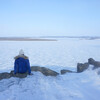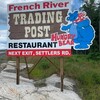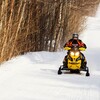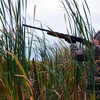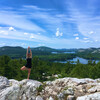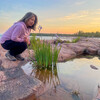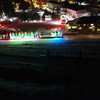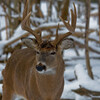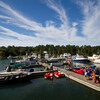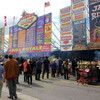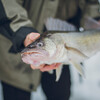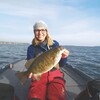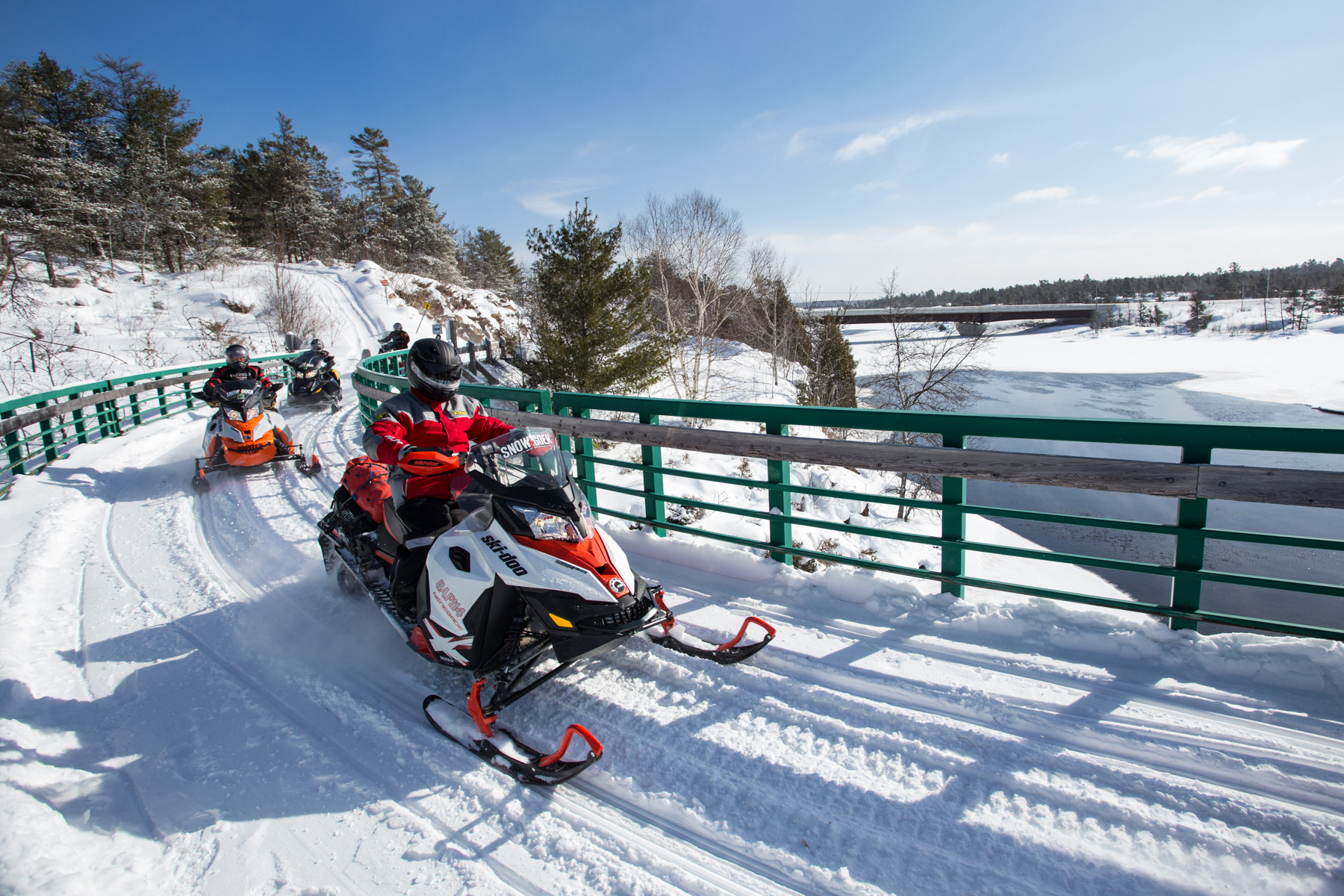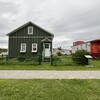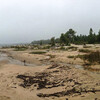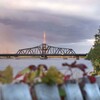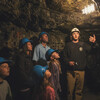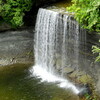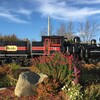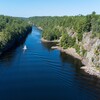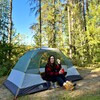
Hot Tubs & Deer Yards
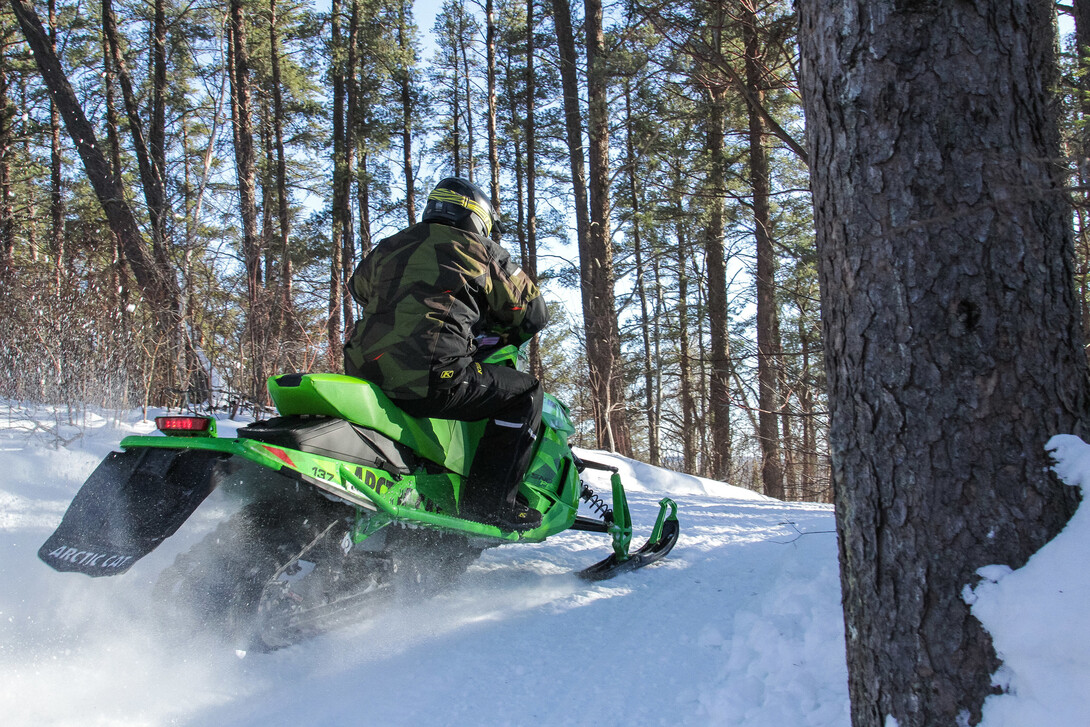
When the cold north wind begins to blow, many people’s thoughts turn to snow…mobiling!
Winter in Northeastern Ontario can be a somewhat extended season, making it an ideal choice for sledding on Ontario Federation of Snowmobile Club (OFSC) trails that are marked, groomed, and will take you into places you just can't get to in any other season.

It's been a while since I took a sledding trip, so I called on old friend Moe Proulx (from Hanmer, Ontario) to catch me up on some of the trails he likes to ride.
Locals Know: Meet Moe Proulx
Moe has been snowmobiling for over 40 years! He told me that without the new sleds that are better on gas, sledding would be a tad more difficult, as you would often have to bring extra fuel with you. Happily, late-model sleds make riding a more comfortable and carefree sport. Add in GPS and cell phone technology, and you have the makings of a great trip.
Although not everyone has the option of riding from their front door, there are many staging areas along the main and OFSC feeder trails. In Moe’s case, he and his group weave through some local trails to get to Trail “C” to begin the first leg of their two-day ride to Powassan.
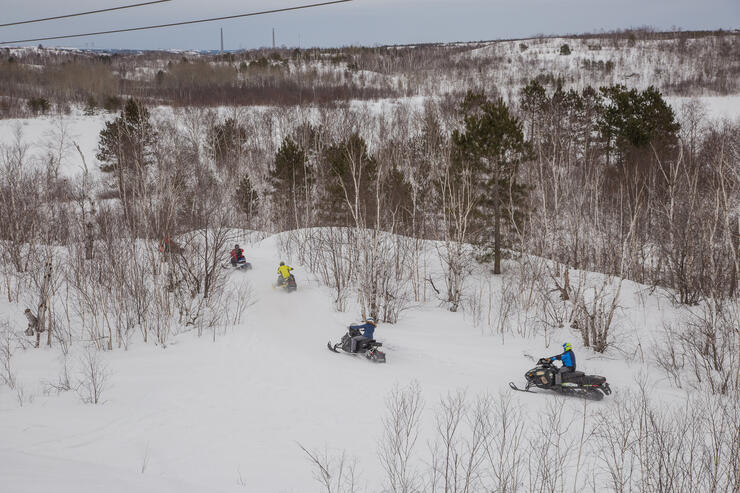
Although weather is not much of an issue, riding on a cold clear day is like nothing else on earth. The snow crunches beneath your feet as you get on your sled. Moe and his group plan to go as far as Alban, on the French River, on their first day – about a three-and-a-half-hour trip. The first stop is in Coniston where they hit their favourite restaurant for breakfast. After filling up with a hearty meal and hot coffee they continue riding the mainly bush trail to Alban, where they stop overnight to get a good night's rest for their marathon ride to Powassan the next day.
Highlight: The Loring Deer Yard
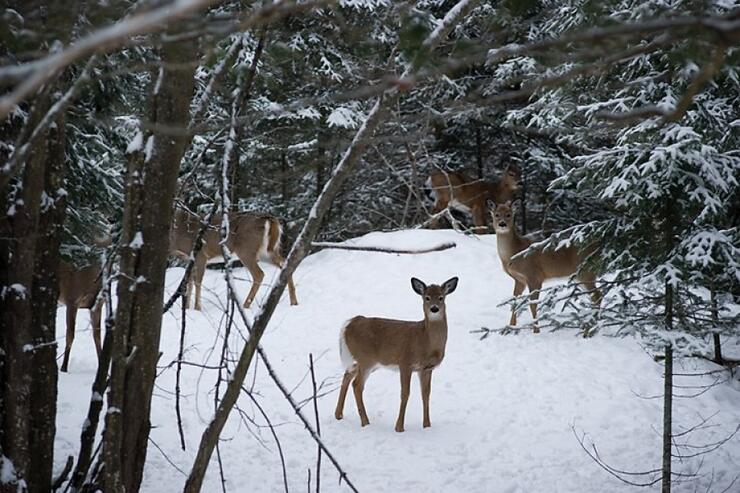
One of the highlights of the trip is the Loring Deer Yard. Each winter anywhere from 8,000 to 10,000 deer will migrate up to 100 km away from their summer range to seek refuge and forage in the towering Hemlock forest. Hemlock trees have wide and dense canopies, so snow tends to stick on the crowns, leaving less snow on the ground. This makes for easier travelling, provides some shelter, and allows the deer better access to their primary food source maple and birch trees.
According to Moe, you had best slow down when travelling in and around the Loring Deer Yard area. It seems they are everywhere and can be seen in groups as large as 25 at a time. Apparently one wanted to try the sport, as a deer almost jumped on his sled! That takes being close to nature to a whole new level.
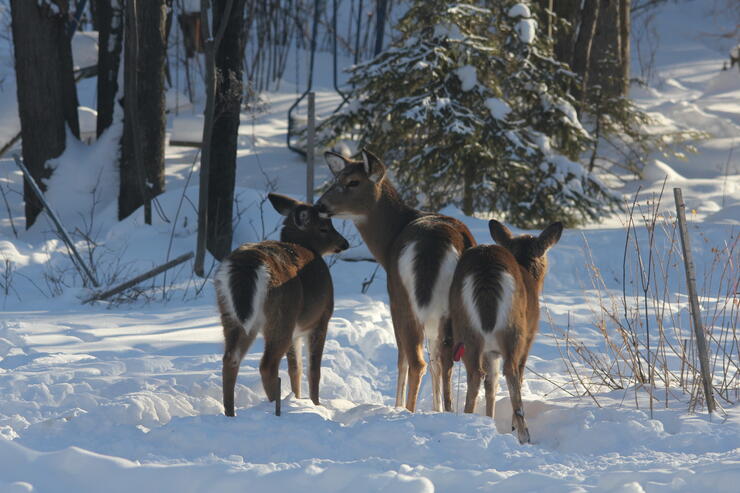
The amazing thing about sledding is that you can go wherever the trail leads you, even if it means going over frozen lakes. As you come to lake crossings along the trail, they will be marked with stakes so that you know you can cross with confidence. Local trail members, primarily volunteers, have checked ice conditions and marked the safest route.
Do not deviate from the marked trails! If there are no markers, do not cross. There are currents and eddies under the ice that you cannot see but affect the ice thickness. Be safe at all times, and enjoy the unique beauty of an ice crossing, but be aware that there may be frost heaves or small crevices that can appear at any time.
The group safely crosses Dollars Lake, clearly marked with the orange reflector stakes and head into Port Loring, a popular destination for sledders.
Where to Stay & Eat

You will have several options for meals and accommodation. Pine Grove Resort Cottages, long operated by the Chambers family, offers accommodations in their Farmhouse or Chalet for the trail-weary rider. Roxie's Diner is open daily except Mondays, and now offers accommodations as well as “good eats.”
Moe’s group decides to make Powassan their final stop. This means a long day's trip, since they started early in the morning, had a bite in Port Loring and then made it to Powassan around 7 pm that night! A couple of hours of that is night riding, which has a charm of its own. A line of sled headlights breaks the darkness of the boreal forest and reflects the gleam of who knows what creatures' eyes, as their solitary night hunt is disturbed.

For those of you who don't want to ride quite that hard, try overnighting in Port Loring, then riding up Nipissing way to North Bay. This city truly is snowmobile-friendly, with many restaurants, hotels, motels and lodges putting out the welcome mat for sledders. If you are worried about your sled, the Best Western North Bay is not only just off the trail system, but they have a secure lock-up and all the amenities including a hot tub. Wouldn't that feel great after a long day's ride?
Be Prepared to Hit the Trails
Wherever you choose to go using Northeastern Ontario’s snowmobile trail system, remember to make use of the many tools available to make your trip safe and enjoyable.

Make use of the OFSC website. Not only can you plan your exact route, but you will have at your disposal the latest update on trail conditions, closures, detours, and weather. You can also purchase your OFSC trail permit, required to use the trail system.
Remember that safety comes first. Never drink and sled. The Ontario Provincial Police may be on the trails checking for permits, and for alcohol use. This brings me to the next item – always have your license, ownership, and insurance with your trail permit. If you're stopped during a RIDE program, you will need to show the documents.
Always have these few essentials with you:
- Extra snack food
- A change of dry clothing in case yours get wet – digging a snowmobile out of deep snow can cause you to sweat and get a chill
- Bring a lighter
- Keep your ice picks around your neck at all times in case of a water-crossing incident
- If you are at all concerned about gassing up along the way, bring extra gas and oil with you
- Plan your stops and keep an eye on weather conditions
This way you too can be snowmobiling for 40 enjoyable years like my friend Moe Proulx.
Recommended Articles
The Seven's Best Hikes, Biking Trails and Lakes

7 Best Spots to Check Out in The Seven

Budget Bliss: Explore Northeastern Ontario Without Breaking the Bank

Bring Your Fam!

Time to Unwind: 6 Spa Havens to Discover In The Seven
5 Amazing Places to SUP in Northeastern Ontario

5 Amazing Bike Rides to Discover

Northern Lights in Northeastern Ontario

Northeastern Ontario's Best Pride Festivals

Fish for one of the World's Rarest Species of Trout

An Insider's Guide to Manitoulin Island

6 Small-Town Gems to Explore in Northeastern Ontario

11 Best Things to Do in Kapuskasing, Ontario

